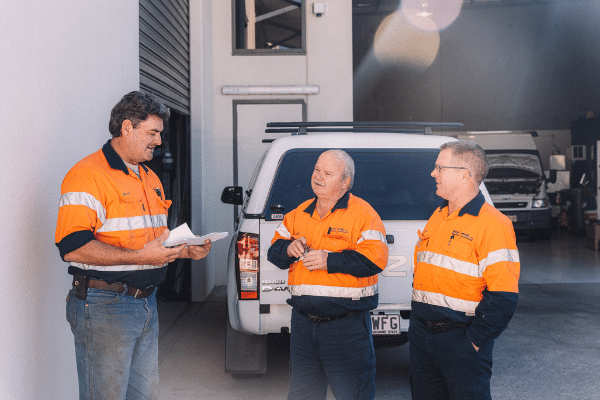What’s checked and fixed when you have your oil water separator serviced, and why you need regular servicing
Regular servicing of your oil water separator acts as preventative maintenance, ensuring that it continues to run as efficiently as possible—and your business stays compliant with your local regulations.
Let’s look at what’s involved with your oil water separator service.
Contact Clearwaste today to find out more about our oil water separator services, to ensure your business continues to run as cleanly and efficiently as possible.
Why you need to service your oil water separator
Like any piece of equipment, your oil water separator needs regular servicing to ensure it’s working as efficiently as possible.
With the complex nature of this machinery, problems can be hard to detect until it’s already too late. It might already be releasing oily water out into the environment—or it could be verging on the point of breakdown.
Without a regular service by an experienced technician, you won’t know any of this until it’s too late. Regular servicing of your oil water separator acts as preventative maintenance. It helps your recruitment to run more efficiently, ensuring it lasts longer, and costs you less in the long run.
What happens in your oil water separator service
We run through a 20-point maintenance checklist when we service your oil water separator. Here’s what’s included.
- Complete an external inspection of the unit for any physical damage, leaks, or areas of concern that indicate it requires further work.
- Check the operation of the holding tank pump, float switch/s and separator controller.
- Isolate the power supply to the pump and float switch/s.
- Check the sludge/solids levels in the holding tank and pump suction tube, to ensure they work correctly.
- Check the waste oil collection drum, and empty it into our on-site facility.
- Drain the separator unit into an on-site holding tank so we can check the condition of the discharge valves.
- Remove the plate pack from the separator and check for any signs of damage or deterioration.
- Drain any solids and flush them into a holding tank.
- Clean the plate pack surfaces to get rid of any build-up of sludge or scum.
- Check the pump parts, including the belts, diaphragm, and valves, and replace any pieces as necessary.
- Complete a service of the pump itself.
- Remove and clean, or if necessary replace, the filter bags.
- Close off the discharge valves, and reinstall and secure the plate packs back onto the oil water separator unit.
- Refill the tank with clean water and check it for any leaks.
- Turn the pump back on and ensure it’s fully operational.
- While the pump is running, we reset the oil skimmer level and ensure it works correctly.
- Pump out the holding tank.
- Clean the service area, removing any debris or service residue.
- Check, clean, and refit the silt traps in the collection pit.
- Document all work completed and safely store it so it’s ready for council audits.
There’s a lot of oil water separator maintenance involved with your service. That’s why we recommend you trust it to the experts.
Clearwaste has over 30 years’ experience cleaning, repairing, maintaining, and installing oil water separator units.
Click here to find out more about our wastewater solutions today to discuss your wastewater needs—and don’t forget to book in for your next oil water separator service.

